
Medline Industries’ Engineering Manager Rick Seaberg looks through MoldMaking Technology at work.
Photo Credit: Medline Industries
Rick Seaberg has 10 years of experience as an injection mold designer, 15 years as a tooling engineer, 12 years as an engineering manager and two years as a plant manager across the consumer packaging, medical, automotive and optical industries.
Today, Rick is the engineering manager at Medline Industries, a private American healthcare company based in Northfield, Illinois. His participation on the EAB includes leadership, processing and procuring molds, training around mold maintenance and trends in Europe, Japan, China and Singapore.
Here, he continues this year’s EAB series by sharing his three all-time favorite MoldMaking Technology articles and key takeaways that have been valuable to his work.
1. January 2022 — Save Time, Money: Use a Mold Design Checklist
Here are 15 examples of common molding issues that occur during an initial mold trial. Many of them could be avoided or corrected with a proactive checklist.
I like this article because it speaks to my roots as a mold designer. It also touches on standardization, critically important to every aspect of mold design, manufacturing and project management. And lastly, it stresses the importance of being proactive — a little extra effort at the beginning of a project may take more time, but down the road, it will actually save time and avoid headaches.
The article focuses on a new mold startup and moving into production, but the same thought process applies to mold safety and preventative maintenance. For example, the article refers to checklists as “living” documents the team should update frequently, and I agree. At Suncast Corp., we had rigorous design reviews across all departments (setup, processing, product design, quality, maintenance). As a result of these meetings, we would update the specifications and checklists immediately when an issue arose and the team wanted to make a new standard, keeping our best practices current.
2. October 2016 — Do Scheduled PMs Really Work?
True preventative maintenance is accurately monitoring and counting issues and corrective actions over time.
I enjoy every article that Steve Johnson writes. He is a true visionary in the often-neglected world of mold maintenance. He is the first person I reference when trying to persuade upper management to focus on better mold maintenance best practices and take the time to understand the impact proper maintenance can have on operations and the bottom line.
This article offers essential steps of a solid maintenance program, which can produce real bottom-line results. First is data collection. Johnson notes that “the critical ingredient to real improvement lies in the ability to monitor and count issues accurately and corrective actions over time, with “time” being mold cycle counts or parts produced. Mold performance does not rely solely on molds being cleaned more often, but on monitoring defects and mold issues to create a viable list of targets that users can focus on when molds are taken out for PM.”
The article also reviews standardization. For example, standardizing terminology and training the team, standardizing data collection and analysis (e.g., work orders, last shots, etc.) and standardizing data entry in maintenance logs for future technicians to understand the mold and its maintenance history clearly.
I recommend handing this article to upper management and signing up for one of Steve’s seminars to help move your maintenance plan to the next level.
3. February 2017 — Maintenance Matters: It’s the Manager’s Fault
Improving worker engagement starts with the leadership at the manager level or, in our case, the toolroom manager.
When I looked at this article again, I was pleasantly surprised to see that the author was Steve Johnson. So, while this article pertains more to managing mold repair operations, plenty of information can be applied across an organization.
When I first became a manager, I struggled to figure out my new role in managing employees and came across a book, Why Employees Don't Do What They’re Supposed To Do, And What To Do About It, written by Ferdinand Fournies. I thought this book would be exactly what I needed to understand people. Well, the joke was on me. Most of the book is about what a manager needs to do to better train, understand, communicate with and motivate their personnel.
Johnson’s article touches upon those same themes — training, providing opportunities and ensuring employees are in the right job to provide the most satisfaction and performance. It also covers standardization (there it is again!), data collection and communication via KPIs. “Measurement without targeted action is useless.” Highly skilled employees like mold builders must have real and meaningful work and data to stay engaged and motivated.
The article ends with a list to measure employee engagement and performance. Do you have the confidence to share that list and evaluate where you are as an organization?
Related Content
What You Need to Know About Hot Runner Systems and How to Optimize Their Performance
How to make the most out of the hot runner design, function and performance.
Read MoreHow to Use Thermal Management to Improve Mold Cooling
A review of common mold cooling issues and possible solutions, including 3D printing applications.
Read MoreHands-on Workshop Teaches Mold Maintenance Process
Intensive workshop teaches the process of mold maintenance to help put an end to the firefighting culture of many toolrooms.
Read MorePortable Low-Heat, Non-Arcing Resistance Welder for Mold Repair
Rocklin’s user-friendly MoldMender Micro Welder delivers simple and cost-effective localized repair in-house with precision and versatility, enhancing mold and die durability and reducing disassembly and downtime.
Read MoreRead Next
Do Scheduled PMs Really Work?
True preventive maintenance lies in accurately monitoring and counting issues and corrective actions over time.
Read MoreMaintenance Matters: It's the Manager's Fault
Improving worker engagement starts with leadership at the manager level or, in our case, the toolroom manager.
Read MoreSave Time, Money: Use a Mold Design Checklist
Here are 15 examples of common molding issues that occur during an initial mold trial. Many of them could be avoided or corrected with a proactive checklist.
Read More


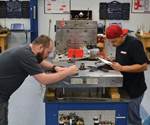

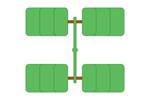











.png;maxWidth=300;quality=90)







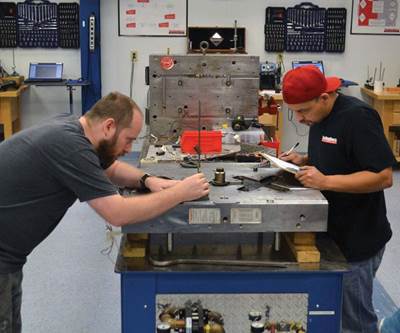
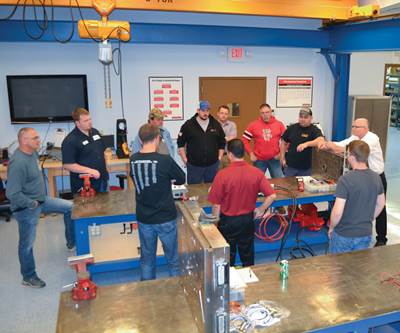
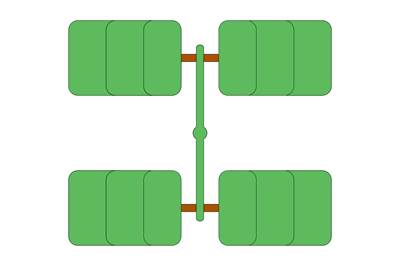
_970x250 1.png;maxWidth=970;quality=90)